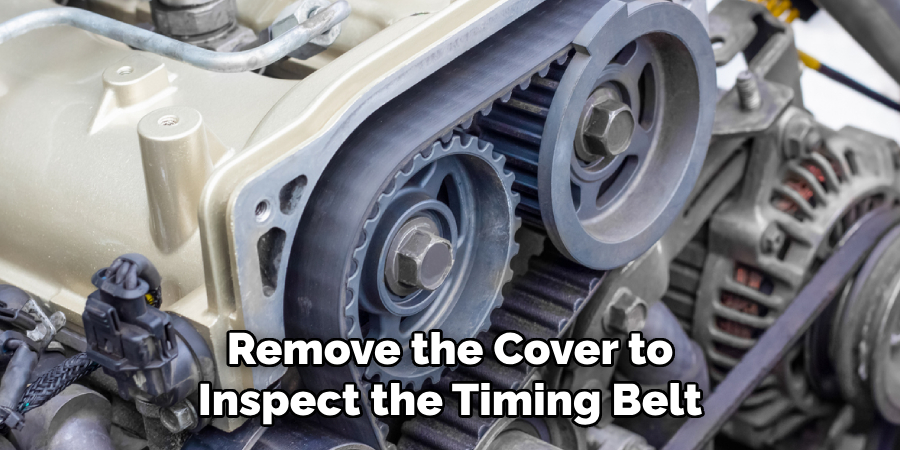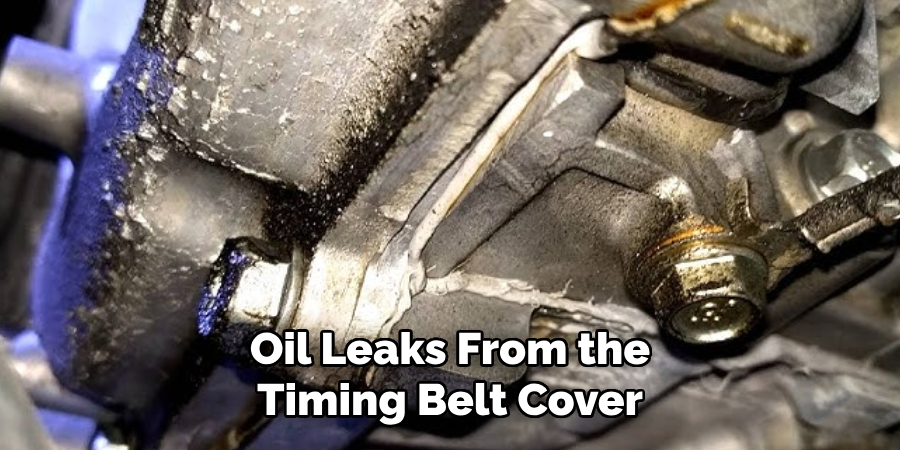Your car’s timing belt is akin to the maestro of your engine’s symphony. It ensures all components are in sync, keeping the rhythm of the combustion cycle as smooth as jazz. But this critical part doesn’t last forever. It stays in harmony until the day it starts to wear out.

Knowing the signs of a bad timing belt can save you from a major engine overhaul and keep your wallet in tune. Here’s how to know timing belt is bad and a decisive list of symptoms to be in the know, even if you’re not a gearhead.
Why Is It Important to Identify if Your Timing Belt Is Bad?
The timing belt is responsible for synchronizing the rotation of the engine’s camshaft and crankshaft. This coordination ensures that the valves open and close at the right time, allowing air and fuel to enter and exhaust to exit efficiently. If the timing belt fails or becomes damaged, it can throw off this synchronization, leading to major engine performance problems.
Identifying a bad timing belt can prevent your car from breaking down or causing severe damage to the engine. By catching the warning signs early, you can save yourself from costly repairs and potential accidents on the road.
How to Know Timing Belt Is Bad: 7 Critical Signs to Watch For
1. Engine Misfire: When the Performance Drops
Imagine your car’s engine as a ballet dancer, with each piston as a pointe shoe controlling the intricate dance. A worn timing belt throws off the ballet, causing a misfire where one or more pistons fail to fire properly in the sequence.
Your car might shudder during acceleration, suffer from a loss of power, or even experience a significant drop in fuel economy. If you notice such irregularities, it’s time to look closely at your timing belt.
Unstoppable Rough Idling
Idling is like the engine’s own downtime, a time to rest in rhythm. When the timing belt is on its last legs, rough idling disrupts this peace, creating a shaky and inconsistent resting heartbeat.
2. Starting Struggle: The Car That Has a Bad Morning
A good morning for a car starts with an effortless engine start. But, with a timing belt whispering its goodbyes, starting the engine might feel like waking a grumpy bear – a long crank time before it eventually roars to life, or worse, the engine might sputter and stall, refusing to engage at all.
Long Crank, No Start

You turn the key, and the engine grinds and grinds, but the car doesn’t quite achieve ignition. This prolonged start-up could be a clear indicator of a bad timing belt.
3. The ‘Tap, Tap, Tap’ of Trouble: Unwanted Engine Beats
You don’t expect your engine to sound like a dystopian symphony when you pop the hood. A ticking or tapping noise, especially near the timing belt cover, is a worrying tune. This sound is a sign of a belt that’s either misaligned or hasn’t been adjusted properly.
Differentiating the Clatter
Not every engine noise is a sign of a failing timing belt. How do you tell the difference? A timing belt’s tap-tap-tap is consistent and sounds like it could be hammering engine parts, while random clatter may come from other areas.
4. Oil Slick Tattles: Leaks from a Limping Belt
A timing belt in good health keeps the engine running smoothly. When it starts to fail, it can allow oil to escape from the covers that encapsulate it, causing unpleasant oil spots under your vehicle. Trouble could also be brewing if you’re consistently adding oil without any apparent leaks in the system, indicating internal engine oil leakage.
Spotting the Broader Issue
Oil leaks are not directly diagnostics of a bad belt, but they relate to consequent complications. A leaking belt cover can let debris into the timing belt area, further accelerating its demise.
5. A Look at the Belt: When Wear Is Visible
Sometimes, seeing is truly believing. You don’t need a mechanic’s eye to notice when your timing belt is at the end of its rope. Look for signs of wear, such as fraying, cracking, or even missing cogs and teeth. The belt won’t work without its full set of musical notes intact.
DIY Wear and Tear Inspection
Turn off your engine, wait for it to cool down, and then carefully remove the cover to inspect the timing belt. Ensure your timing marks are aligned and gingerly determine if it’s time to schedule a replacement.

6. Smells of a Smoking Belt: When Overheating Happens
A timing belt that’s on the edge can cause your engine to overheat. As rubber shreds from the belt, it can clog parts of the cooling system, inhibiting the flow of coolant and leading to an unexpected rise in engine temperature, possibly accompanied by the smell of burnt rubber emanating from the engine bay.
Monitoring Your Temperature Gauge
Your car’s temperature gauge is more than dashboard decor. It’s there to alert you to head off overheating issues. Keep a close eye on it, especially if you’ve noticed other symptoms of a failing timing belt.
7. The Silence of Belt Breakage
This might be the most terrifying and costly symphony the engine can perform. If the timing belt breaks, it’s a literal showstopper. The engine will stop running and, depending on your driving speed, could even cause significant damage, such as bending valves. Be proactive and prevent the ultimate crescendo of timing belt failure.
Regular Check-Ins Can Save You Big Time
Echoing the manufacturer’s recommended intervals for timing belt replacement might seem like over-cautious periodic maintenance. Still, it’s a sound investment in the longevity of your vehicle, not to mention your peace of mind on the road.
How Often Should You Replace Your Timing Belt?
The general rule of thumb is to replace your timing belt every 60,000 to 100,000 miles or every 5-7 years, whichever comes first. However, this can vary depending on the make and model of your vehicle. It’s crucial to check your car’s owner’s manual for the manufacturer’s specific recommendations.
Exceptions to the Rule
Some manufacturers have a longer recommended replacement interval for their timing belts, while others strongly recommend replacing the belt at 60,000 miles regardless of time. Additionally, certain driving conditions, such as extreme temperatures or heavy towing, can shorten the lifespan of a timing belt.

4 Common Mistakes People Make When Trying to Identifying the Timing Belt Is Bad
Ignoring Warning Signs
Many people ignore early symptoms of a failing timing belt, such as rough idling or difficulty starting the engine. They may dismiss these issues as minor and delay getting their car checked by a mechanic until it’s too late.
Not Keeping Track of Maintenance History
If you’ve recently purchased a used car, finding out when the timing belt was last replaced is essential. If you can’t determine this information, it’s best to err on caution and replace the belt sooner rather than later.
Skipping Recommended Replacement Intervals
As mentioned earlier, different manufacturers have varying recommendations for timing belt replacement. It’s important to follow these guidelines and not wait until the belt shows signs of wear or failure.
Attempting a DIY Replacement
Replacing a timing belt is a complex and delicate task that should be left to professionals. Trying to do it yourself without the necessary expertise and tools can lead to further damage and costly repairs in the long run. It’s always best to trust a qualified mechanic to handle this critical component of your engine.
Frequently Asked Questions About Timing Belt Replacement
Q: How do I know if my timing belt needs to be replaced?

A: Symptoms that your timing belt may need replacing include a ticking noise from the engine, engine misfires or rough idling, oil leaks from the timing belt cover, visible wear on the belt itself (such as fraying or cracks), overheating engine, or if your car suddenly stops running. However, it’s best not to wait for symptoms to appear and do regular check-ups based on the manufacturer’s recommendation.
Q: Can I replace my timing belt on my own?
A: Replacing a timing belt is a complex job that typically requires specialized knowledge and tools. It’s usually not recommended as a DIY project due to the risk of damaging your engine. It’s best to have a trained mechanic perform the replacement.
Q: What happens if I don’t replace my timing belt when it’s due?
A: Failing to replace your timing belt at the recommended intervals can lead to a belt breakage, which can cause your engine to stop running and potentially lead to significant engine damage, like bent valves or even ruined pistons.
Conclusion: The Symphony Must Go On
Your car’s engine is a finely tuned symphony of moving parts, all coordinated by the heartbeat of the timing belt. When that rhythm is disrupted, the entire performance is in jeopardy. By keeping your senses attuned to these signs of an ailing timing belt, you’re not just preventing a breakdown – you’re ensuring that every part of your automotive orchestra continues to sing in harmonious unison.
Don’t delay, tune into your timing belt’s melody, and ensure the sweet hum of a well-maintained engine. After all, the most beautiful orchestras are those that never miss a beat. Thanks for reading our post about how to know timing belt is bad.

About
JeepFixes Team is a skilled author for Jeep Fixes, bringing 6 years of expertise in crafting a wide range of jeep fixes. With a strong background in jeep fixes work, JeepFixes Team’s knowledge spans various types of fixtures, from decorative pieces to functional hardware, blending precision with creativity. His passion for jeep fixes and design has made him a trusted resource in the industry.
Professional Focus:
Expert in Jeep Fixes : JeepFixes Team aesthetic specializes in creating durable and innovative jeep fixes, offering both appeal and functionality. His work reflects a deep understanding of jeep fixes techniques and materials.
Sustainability Advocate : He is dedicated to using sustainable practices, ensuring that every fixture is crafted with eco-friendly methods while maintaining high-quality standards.
In his writing for jeep fixes, JeepFixes Team provides valuable insights into the latest trends, techniques, and practical advice for those passionate about jeep fixes, whether they are professionals or DIY enthusiasts. His focus on combining artistry with engineering helps others discover the true potential of jeep in design.
